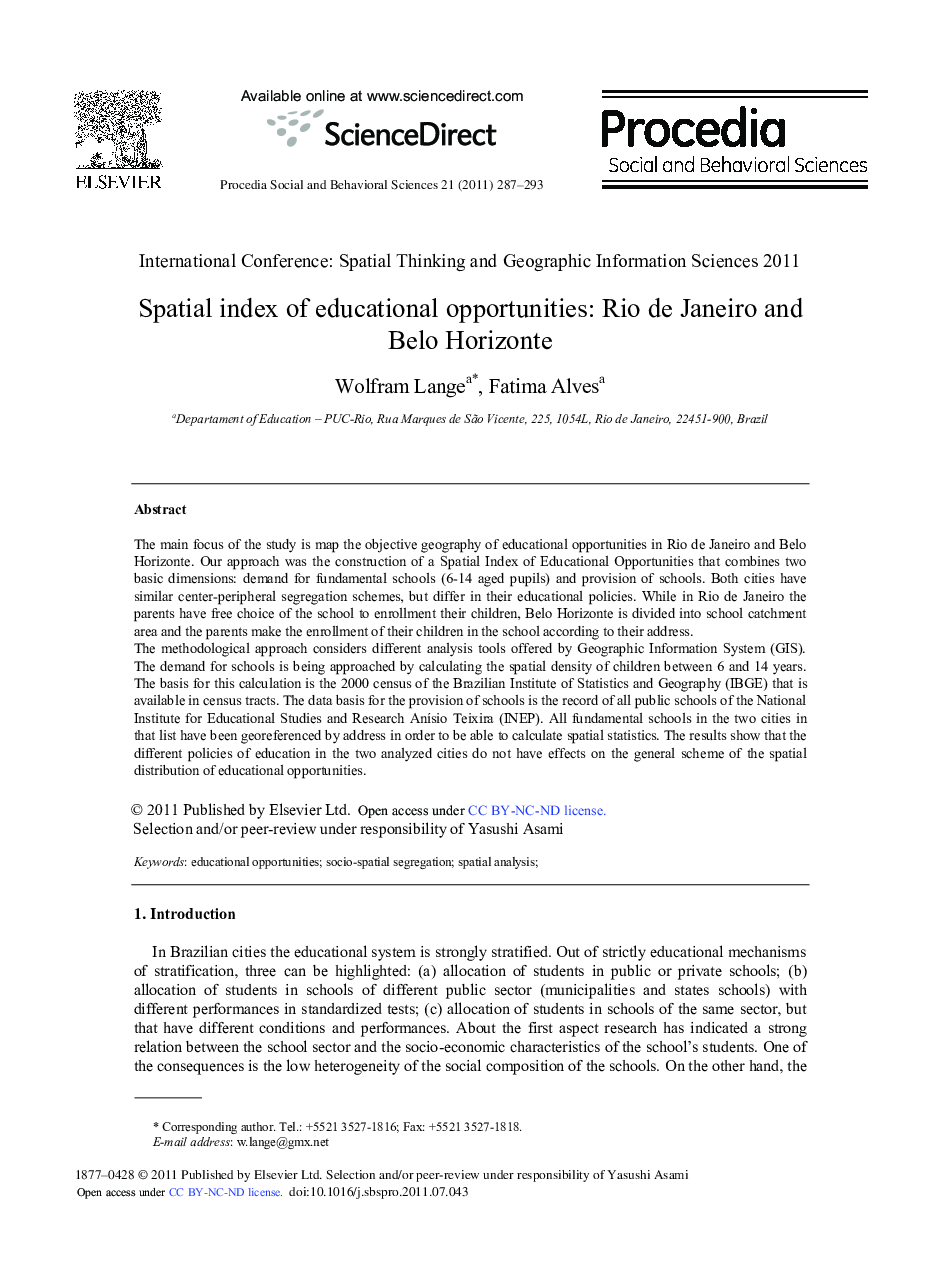| Article ID | Journal | Published Year | Pages | File Type |
|---|---|---|---|---|
| 1123953 | Procedia - Social and Behavioral Sciences | 2011 | 7 Pages |
The main focus of the study is map the objective geography of educational opportunities in Rio de Janeiro and Belo Horizonte. Our approach was the construction of a Spatial Index of Educational Opportunities that combines two basic dimensions: demand for fundamental schools (6-14 aged pupils) and provision of schools. Both cities have similar center-peripheral segregation schemes, but differ in their educational policies. While in Rio de Janeiro the parents have free choice of the school to enrollment their children, Belo Horizonte is divided into school catchment area and the parents make the enrollment of their children in the school according to their address. The methodological approach considers different analysis tools offered by Geographic Information System (GIS). The demand for schools is being approached by calculating the spatial density of children between 6 and 14 years. The basis for this calculation is the 2000 census of the Brazilian Institute of Statistics and Geography (IBGE) that is available in census tracts. The data basis for the provision of schools is the record of all public schools of the National Institute for Educational Studies and Research Anísio Teixira (INEP). All fundamental schools in the two cities in that list have been georeferenced by address in order to be able to calculate spatial statistics. The results show that the different policies of education in the two analyzed cities do not have effects on the general scheme of the spatial distribution of educational opportunities.
